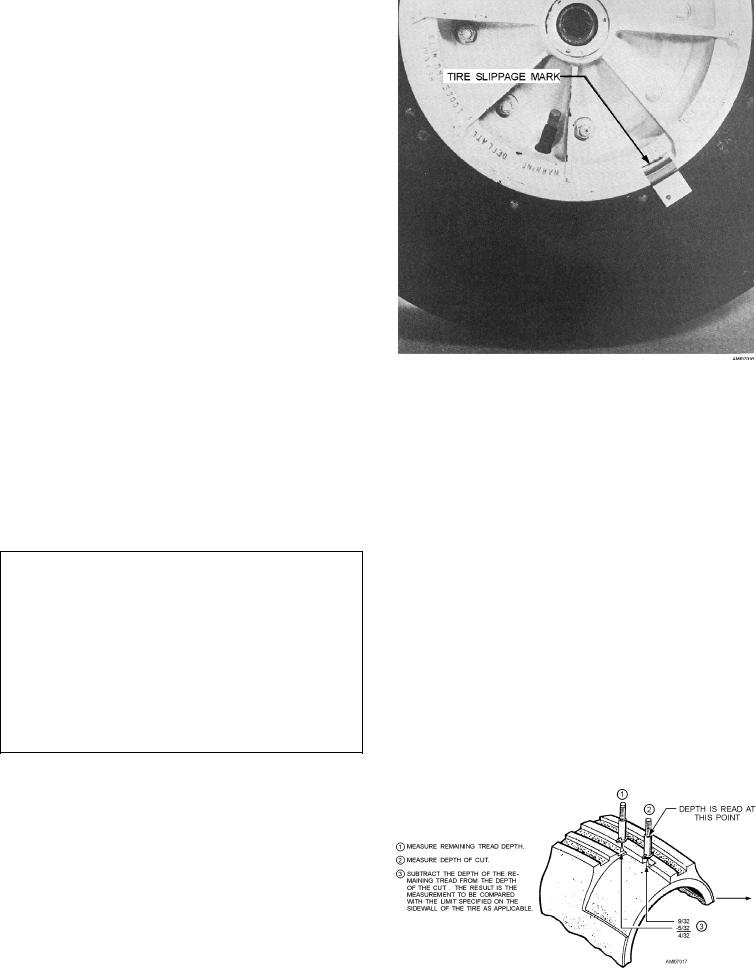
rim, as shown in figure 7-16. Tires should be inspected
for slippage on the rim after each flight. If the markings
do not align within one-fourth of an inch, the wheel
assembly should be replaced and the defective
assembly forwarded to the AIMD or IMA for repair.
Failure to correct tire slippage may cause the valve stem
to be ripped from the tube.
Tire treads should be inspected to determine the
extent of wear. The maximum allowable thread wear
for tires without wear depth indicators is when the tread
pattern is worn to the bottom of the tread groove at any
spot on the tire. The maximum allowable tread wear for
tires with tread wear indicators is when the tread pattern
is worn either to the bottom of the wear depth indicator
or the bottom of the tread groove. These limits apply
regardless of whether the wear is the result of skidding
or normal use.
The tread and sidewall should be examined for cuts
Figure 7-16.--Tire slippage mark.
and embedded foreign objects. Figure 7-17 shows the
method for measuring the depth of cuts, cracks, and
Dismounted Inspection
holes. Glass, stones, metal, and other materials
embedded in the tread should be removed to prevent cut
Whenever a tire has been subjected to a hard
growth and eventual carcass damage. A blunt awl or
landing or has hit an obstacle, it should be removed in
screwdriver may be used for this purpose. You should
accordance with the applicable MIM and dismounted
be careful to avoid enlarging the hole or damaging the
for a complete inspection to determine if any internal
cord body fabric.
damage has occurred. The tire beads should be spread,
and the inside of the tire inspected with the aid of a
light. If the lining has been damaged or there are other
WARNING
internal injuries, the tire should be removed from
service. You should check the entire bead area and the
When you are probing for foreign objects, be
area just above the bead for evidence of rim chafing and
sure you keep the probe from penetrating deeper into
damage. Check the wheel for damage that may damage
the tire. Objects being pried from the tire frequently
the tire after it is mounted.
are ejected suddenly and with considerable force. To
avoid eye injury, you should wear safety glasses or a
AIRCRAFT TIRE MAINTENANCE
face shield. You can place a gloved hand over the
object to deflect it.
Aircraft tire inspection and maintenance have
become more critical through the years because of
Aircraft should not be parked in areas where the
tires may stand in spilled hydraulic fluids, lubricating
oils, fuel, or organic solvents. If any of these materials
is accidentally spilled on a tire, it should be
immediately wiped with a clean, absorbent cloth. The
tires should then be washed with soap and thoroughly
rinsed with water.
You should take extra care when you inspect
mounted helicopter tires. Because of the long intervals
between tire changes, helicopter tires are subject to
Figure 7-17.--Method of measuring depth of cuts, cracks, and
holes.
weather and UV damage.
7-14

